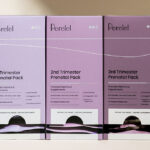Busted!
Pregnant women and new mothers sometimes feel like magnets for […]
Pregnant women and new mothers sometimes feel like magnets for unsolicited advice. A trip to the grocery store or a walk to the mailbox can turn into a lesson in feeding, diapering or the all-sacred infant sleep schedule. Since every family has its own tips, tricks and culture of parenting, new moms are often stuck between conventions and traditions. Fortunately, there is good science to support many of those new-mommy instincts and relieve moms of the stress of restrictive old wives’ tales. Learn the truth behind the myths and go forth to nurse your baby confidently and successfully.
DIET RESTRICTION MYTHS
Myth: Breastfeeding mothers should steer clear of “gassy” foods like cabbage, beans and broccoli to avoid giving the baby tummy troubles.
Where it comes from: Belief-based practices are often tested with confirmation bias. The only study ever conducted to confirm this statement was a retrospective diet diary study. In short, the researchers simply asked the participant mothers to remember their diets and periods of fussiness. Unfortunately, participants tend to report a variety of foods cause colic symptoms based on their belief.
What science says: Crunchy veggies, beans and legumes all have high amounts of insoluble fiber which interact with bacteria in the adult gut and cause gas. Insoluble fiber does not leave the gastrointestinal (GI) tract or enter the bloodstream. Since human milk is made from the blood supply and not the GI contents, it is impossible for babies to get this gas-causing insoluble fiber from breast milk. Not all mothers heed these false, if well-meaning, warnings and choose instead to follow baby’s lead. For first-time mom Grace Fearon in Grand Blanc, Michigan, the breastfeeding journey has been the easiest part of the process of motherhood so far. She has followed her baby’s cues and not restricted herself. “I’ve never had anything I’ve eaten deter my son from nursing,” she says.
Myth: Lactating mamas should eat a bland diet to protect the milk from strong flavors like garlic and spicy peppers.
Where it comes from: Refraining from spices tends to be a widely held belief across many cultures and is often found peppered throughout social media message boards on which nursing mothers share stories and advice.
What science says: Spice and heat don’t transfer into the milk. Human milk is actually quite sweet. Plenty of moms try a drop wondering about the spicy food they have eaten and are surprised to find no evidence of their fiery meal. A garlic study published in Pediatrics in 1991 showed that babies actually enjoy the subtle flavor changes of garlic and take in more milk. In fact, garlic supplements may be a viable option for moms of slow gainers and distracted nursers. The subtle flavor changes of the maternal diet are thought to prepare the nursling for solid foods that are typical of the family’s fare. The World Health Organization’s breastfeeding counselor training program instructs trainers to encourage nursing mothers to chose the widest variety of foods possible, especially those that are local and fresh. “I was told that whatever I ate, the baby ate,” recalls Lori Rosichan, mom of one in Miami, Florida. “I started off cautiously but soon realized that I needed to expose my baby to as much as possible and began eating all sorts of foods.”
Myth: Only moms who eat a special diet have high quality milk. Vegan and vegetarian moms make low quality milk. Moms who eat fast food have less nutritious milk.
Where it comes from: A good bit of this rhetoric sounds like simple logic might be at work. We all know that eating well leads to better overall health.
What science says: Maternal diet plays little role in milk quality. During pregnancy, the body holds on to additional fluids and fats. Those stores are used up in the early breastfeeding months. Cross cultural milk studies have shown that sufficient and nutritious milk is made all around the world for nursing pairs living in a wide variety of conditions. Wartime of the 1940s provided a unique look at hunger and breastfeeding. The Dutch “hunger winter,” between 1944 and 1945, resulted in severe malnutrition of lactating women in what had previously been a thriving and developed nation. However, infants born during this catastrophe were found not to be affected when duration of breastfeeding and infant growth patterns were evaluated.
ALCOHOL MYTHS
Myth: After drinking alcohol, mom should “pump and dump” to remove the alcohol from the milk since milk from a mother who has had an alcoholic drink is unsafe.
Where it comes from: Perhaps we are all just fans of clever rhymes? “Lefty loosey, righty tighty” is certainly true and useful.
What science says: Alcohol does transfer from mom’s blood supply into her milk, but it also leaves the milk at about the same rate as it leaves her blood supply. This means that the alcohol does not get “trapped” in the milk and that removing and discarding the milk is unnecessary. Jack Newman, MD, a Canadian pediatrician who specializes in breastfeeding, is internationally known for his sensible and scientific approach. His handout “More Breastfeeding Myths” describes his medical opinion: “Reasonable alcohol intake should not be discouraged at all. As is the case with most drugs, very little alcohol comes out in the milk. The mother can consume some alcohol and continue breastfeeding as she normally does.” Prohibiting alcohol, he suggests, is an unnecessary restriction. In short, alcoholic or unsafe milk should not be a concern for mothers who consume moderate amounts of alcohol.
Myth: Drinking a beer daily improves milk supply.
Where it comes from: Fermented nutrition beers for pregnant and lactating women are described throughout historic documents from ancient Egypt to more recent times. Drinks called “small beers” were regularly recommended for women and children as well and had low alcohol content. These fermented drinks were low in foodborne illness (because of alcohol fermentation) and high in nutrients because of the grains they were made from. Brewing wines and beers has been of great cultural significance for all of written history.
What science says: Alcohol inhibits milk production. Alcohol may impact the flavor of human milk and cause babies to nurse less, leaving mom with fuller breasts and thus believing she is making more milk. Alcohol also slows the milk ejection reflex. However, animal studies have shown that some of the compounds in certain grains may improve the blood level of prolactin, the hormone responsible for milk production. If these compounds have the same effect on human milk production, eating nutritiously prepared whole grains is probably more ideal.
ILLNESS AND MEDICINE MYTHS
Myth: Women who are sick should not breastfeed.
Where it comes from: Some illnesses do pass to the infant through breast milk or close contact such as holding a baby.
What science says: Most common illnesses like the flu virus, colds, food poisoning and sinus infections are not transmitted through breast milk. Chances are, if mom has a cold, the baby was exposed at about the same time. Mom’s milk will change daily to fight the new infection and protect the baby. Direct nursing at the breast is the best protection a mother can give her baby.
Myth: Nursing moms can’t take medicines because they will be dangerous to the baby or “dry up” the milk supply.
Where it comes from: Until recently, drug studies for pregnant and lactating women were limited. Erring on the side of caution is almost always the best medical advice.
What science says: It’s not uncommon for mothers to need unexpected medical treatments during breastfeeding. “When I was breastfeeding my second child, I had to have my gallbladder removed,” says Lindsy Ross, mom of two in Hickory, North Carolina. “I chose to limit my pain medications to only breastfeeding-friendly drugs so I could continue to nurse.” Some of the more common surgeries breastfeeding women have are caesarean sections and oral surgeries. Breastfeeding- friendly anesthesia and pain medications are available for both. In fact, most classes of medications have a breastfeeding-safe option. Pain medicines, anti-depressants, anesthesia, allergy medicine, antibiotics, and a variety of drugs for chronic conditions can usually be safely taken while breastfeeding.
SUPPLEMENTATION MYTHS
Myth: Human milk is deficient in iron and all breastfed babies need an iron supplement to prevent anemia.
Where it comes from: Human milk contains lower levels of iron than formula.
What science says: This myth actually has nothing to do with breastfeeding and is all about common birth practices. Exclusive breastfeeding will provide all the nutrients your baby needs until she begins solids, around 6 months of age. The type of iron in human milk is easily absorbed and highly bioavailable. Iron deficiency anemia seems to be more prevalent in exclusively breastfed babies, but new science about cord clamping is helping us understand why. Premature clamping of the umbilical cord is a risk factor for iron deficiency anemia in all babies, regardless of feeding method. A Swedish study on delayed cord clamping (a delay of only 180 seconds) was published in the 2011 British Medical Journal, concluding that “delayed cord clamping, compared with early clamping, resulted in improved iron status and reduced prevalence of iron deficiency at 4 months of age.” One of the best practices is to delay cord clamping until the cord naturally stops pulsating or the placenta is delivered, which allows baby to achieve biologically normal iron stores and blood volume to prevent anemia.
Myth: Babies need water on hot days.
Where it comes from: This is a commonly held belief in warm climates. Water is globally viewed as a “source of life.” The milk of domesticated animals like goats, sheep and cows is thick with minerals and not very thirst-quenching. It’s not unreasonable to think human milk is like the other animal milks we have daily experience drinking.
What science says: Human milk is about 87 percent water. It comes complete with electrolytes, fats and proteins to perfectly hydrate a baby. Contaminated water is a major risk in developing nations, but even clean water should be avoided to prevent water intoxication in otherwise exclusively breastfed infants. A 1991 study published in the American Journal of Disease of Children refers to infant water intoxication as an epidemic in America. Although the majority of water intoxication cases studied originated in low-income families replacing formula feeds with water, exclusively breastfeeding mothers also need to be informed of the risks of water-feeding infants.
PHYSICAL EFFECTS MYTHS
Myth: Breastfeeding at night is bad for teeth and can cause cavities.
Where it comes from: Poor oral hygiene is common in older babies and toddlers who fight the toothbrush, and the use of formula milks, dairy milks, juices and teas in nighttime bottles is correlated with dental decay. Human milk is often assumed to behave like other foods and drinks.
What science says: Brian Palmer, DDS, a pioneer in the dental field, has extensively researched the oral health of the breastfed baby and child. In his article “Breastfeeding and Infant Caries: No Connection,” he cites multiple studies describing breastfeeding as the optimal feeding method for best oral health. Human milk is a living tissue and is protective of the growing teeth. Teeth that have food particles on them are always at risk for decay, but clean teeth that have come in contact with human milk are not at risk. As long as your baby gets brushed after dinner, the teeth are safe overnight, regardless of how frequently she nurses after brushing. There is no need to wipe the mouth out after nursing.
Myth: Breastfeeding causes saggy breasts.
Where it comes from: Most women notice a change in their breasts during motherhood. It’s easy to blame breastfeeding since so many women do nurse their babies for some amount of time.
What science says: Breast changes and breastfeeding are both common experiences, but just because two things are common doesn’t mean they are correlated. Plastic surgeons have little stake in the breastfeeding industry and are certainly experts in culturally undesirable body changes. A 2008 study published in Aesthetic Surgery Journal has shown that breastfeeding does not cause sagging breasts (or breast ptosis as it’s medically termed). Weight gain in pregnancy, age, higher number of pregnancies, and smoking are all cited as independent contributing factors to aesthetic changes of the breasts. “I was also told my breasts would never again be the same. They would lose their shape from breastfeeding. I honestly thought that would be true because skin does lose elasticity, but I didn’t care because any shape would be more than the A-cup I’ve always had,” says Sharanda Payseur, mom of one in Gastonia, North Carolina. Happily, “my breasts didn’t change shape and aren’t hanging to my waist. I’m perfectly content with my breasts even after breastfeeding.”
EXPERTS AND MOMS AGREE
Being truly informed about infant feeding can help moms feel comfortable with their choices, but it can’t stop strangers from offering their own brand of “help” with everything. So what’s a new mom to do when a dear family friend or nosey co-worker insists she change up her breastfeeding plan? Jillian McCann, OB nurse and veteran nursing mother in Norfolk, Virginia, says, “I think we need to work on providing all women with educated help in the form of a lactation consultant immediately postpartum and follow-up within a week of hospital discharge or birth.” When reflecting on her own nursing journey, having that expert level of help early on could have prevented a great deal of struggle. After seeing the lactation consultant at the hospital where she worked, she says, “The journey became what I always expected—easy and natural.”








